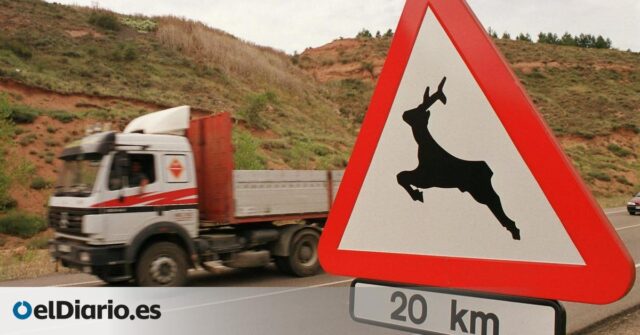The General Department of Traffic (DGT) launched New guide for recommendations for reduction Smart The road caused Wild animals. The initiative appeared after registration about 35,000 accidents per yearWhat is equivalent On average 96 daily clashesThe questionnaires prepared in cooperation with the working group on the fauna and the road network (GT-FRV) seeks to serve as a reference to administrations, concessenhips, technicians and responsibility for maintaining roads. Although animals are traditionally associated with rural regions, the data show an expanded phenomenon.
Communities with the largest number of complaints for this reason Castilla and LeonIN GaliciaIN CataloniaIN Castilla-la Mancha And Aragon. In general, more than 70% of accidents are concentrated in these regions. Only in 2022, 33% of accidents with fauna occurred on the roads belonging to the state, and 67% took place in regional and local networks.
Jabali is the most involved in the accident
Jabali is a view participating in the greatest number of incidents, Representing 47% of cases. They are followed by ROE (18%), dog (13%) and fox (7%)Other animals, such as deer, will, birds or cattle, also appear in statistics. Traffic warns that these clashes not only cause material damage, but also injured and, to a lesser extent, fatal cases. The level of accidents, although often invisible, has become a structural risk factor that affects the safety of the road and control of the natural environment.
Guide offers
A guide Offers a methodology for Determine critical points with high accidents from the presence of faunaThey were found all the questionnaires 152 conflicting sections of more than 1 km throughout the state network, From the intersection of claims between 2018 and 2021 and territorial variables, such as the density of fauna and protected natural zones. These points are concentrated 40% of all accidents of animalsProfichen Identification of these sections will prioritize investments and design more effective interventions.
Among the recommended measures Installing reinforced fences around the perimeter, Fauna steps (eco -doz, lower steps), animal detection sensors connected to Small signalsAnd also Cleaning and improving on the roadHe also includes the profiles of improving the transmission of signals and database of the fauna, with the proposals for integration into systems such as the MCS road service application. These actions strive not only to prevent accidents, but also to protect biodiversity.
Factors that determined the change in the behavior of many types
Experts emphasize that Climate change and city expansion They changed the behavior schemes of many types that now more often cross the roads or approach the urbanized areas in search of food or shelter. Besides, The rural population is reduced reduces human pressure on some ecosystems, facilitating Increased species Like a wild boar. This new reality requires adaptation of road planning to new environmental and social problems.
The document affects it is necessary to act with technical criteria based on evidenceThe profiles for this are offered a protocol of analysis, which contemplates factors such as the concentration of accidents, the type of road, involved species or seasonality of collisions. More broad coordination is also recommended between state administrations, the natural environment, security forces and conservation organizations. Only thanks to a coordinated response will it be possible to reduce accidents and their consequences in stable ways.
At the moment, this is not normative
Although the leadership is not a normative nature, it seeks to become a reference document for the recruitment of involved participants. The implementation of these recommendations will depend on political willBudget accessibility and participation of various levels of administration. Nevertheless, the urgency of the problem and scientific data that support proposals make it difficult to justify inaction.
With growth Claims caused by Fauna, which already represents more than 35% of total accidents with victims in some regionsThe authorities are looking for more effective tools to encounter a problem that is no longer marginal, but structural. The authors warn, the implementation of these measures will not only improve the safety of the road, but also the preservation of biodiversity. The balance between mobility and stability requires action on a problem that, if not solved, will continue to grow over time.









